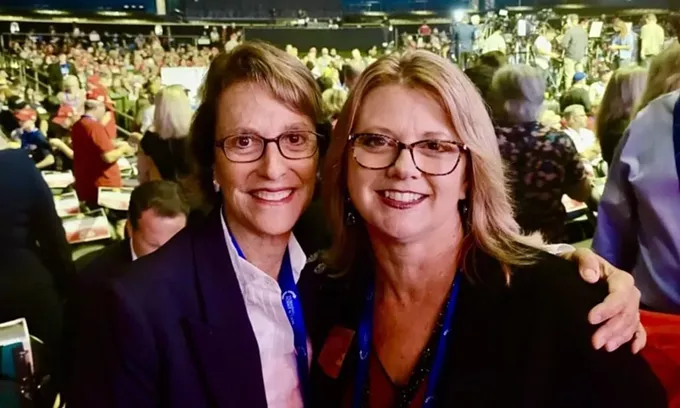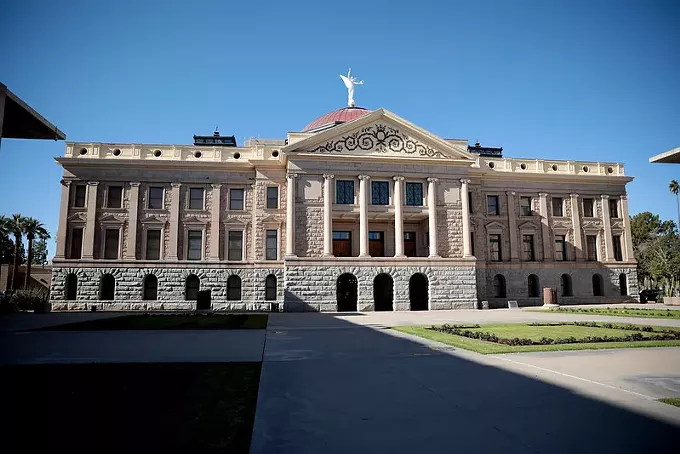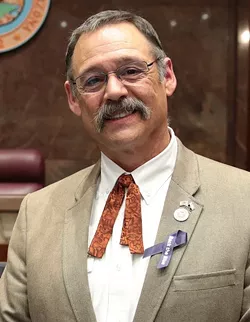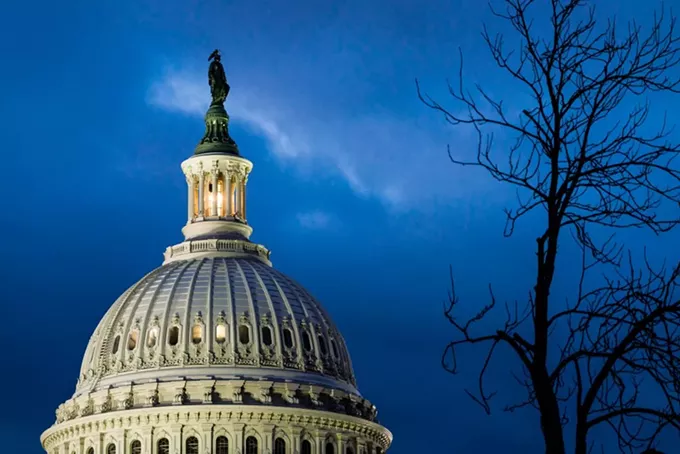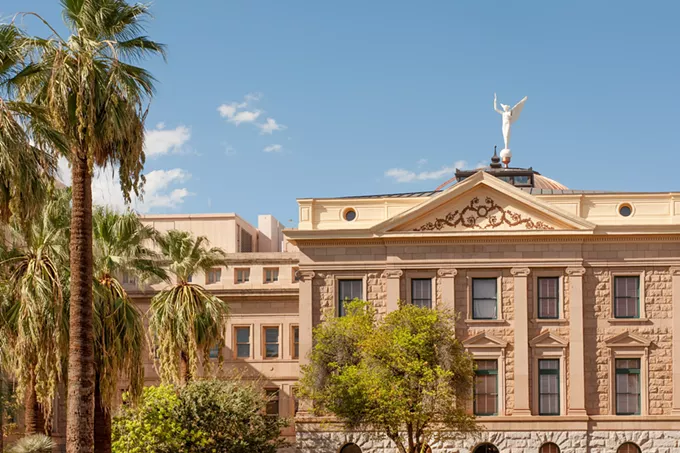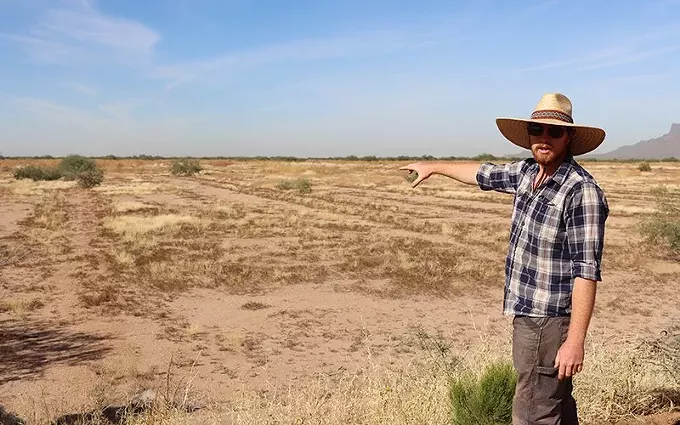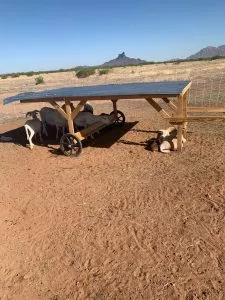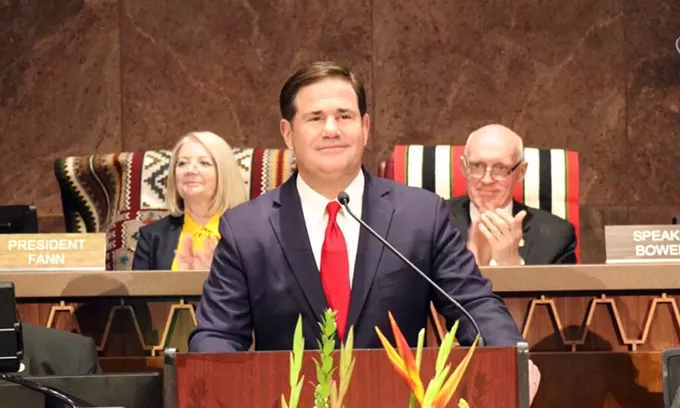Wednesday, March 9, 2022
The drop, from a life expectancy of 78.8 years to 77 years, could also have come from existing issues with obesity, opioids and suicide, officials say. It was the largest single-year drop since 1943, according to a December report by the Centers for Disease Control and Prevention.
“It is no question that … at least for the last four years, opioids, obesity, and then getting hit with COVID has really just resulted in more people dying much sooner than they should have,” said Dr. Georges Benjamin, executive director of the American Public Health Association.
For Arizona, 2020 life expectancy numbers are not expected to be available until later this year. But life expectancy in the state had been declining for several years, falling from 79.6 years in 2014 to match the national rate of 78.8 years in 2019, the latest year for which CDC numbers are available.
But 2020 also saw a huge spike in the overall death toll in Arizona, when the number of deaths jumped 25% from 60,161 in 2019 to 75,700 deaths in 2020, according to the Arizona Department of Health Services. Deaths rose again to 80,733 in 2021. While annual deaths in Arizona have been rising since 2009, the average annual increase had always been fewer than 1,500 deaths.
“We have not seen a dip like this since literally a world war … I think it really starts putting into perspective the effect of COVID-19 on our population,” she said.
Reddy said that while much of the drop in 2020 was caused by the virus, “staggering” prepandemic increases in suicide, heart disease and diabetes also impacted life expectancy.
Benjamin said the country had been “on a pretty good pathway” toward longer lifespans as a result of changes such as a reduction in unhealthy habits like smoking. Then COVID-19 hit.
“It’s a big deal. And you don’t get that back right away,” he said. “You know, you can’t do a lot of magical things and all of a sudden, the next year you gain those two years back in life expectancy.”
And the full extent of the pandemic’s effects on conditions like cancer has not been seen yet, according to Allan Williams, an adjunct assistant professor at the University of Minnesota School of Public Health. He said fewer people were able to visit a physician for regular screenings in 2020, which delayed them from receiving life-saving treatments.
“If you don’t get your mammogram … it’s not going to be an immediate death,” Williams said. “It just means that by the time they do find it (breast cancer) … you’re at a more advanced stage, and so death is going to occur sooner.”
Reddy noted this same risk of putting off preventive and curative measures, adding that fewer children received scheduled vaccines during the height of the pandemic.
“What’s going to be the result of all of that, when we kind of come through the COVID fog?” Reddy said. “I think, unfortunately, the answer is not great.”
Senate Republicans on Monday advanced bills on voter registration that critics say will discourage some younger people — particularly college students — from registering to vote.
On Monday afternoon, the Senate Government Committee considered bills from the lower chamber. One bill would ban same-day voter registration — something that doesn’t exist in Arizona. Instead, residents must fill out a registration form 29 days before an election occurs to be eligible to cast their votes in that election. Only 20 states and the District of Columbia allow same-day registration.
The measure, House Bill 2237, is an attempt to preempt any future attempts to allow same-day registration. Of course, any future legislature that wished to enact same-day registration would simply be able to repeal the law banning it.
Government Committee Chairwoman Kelly Townsend said banning same-day registration was needed to reduce fraud, something she speculated was already happening with provisional ballots. The Apache Junction Republican is an ardent proponent of the Big Lie, the false belief that the 2020 election was stolen from Donald Trump by fraudulent voting. There is no evidence that Joe Biden won because of fraud, and a partisan review of the election in Maricopa County found no proof that the election results were inaccurate.
“If somebody were to vote who wasn’t registered and took a provisional ballot, are they able to circumvent the voter registration process?” she asked.
Provisional ballots are given to voters who show up at the wrong polling place, or whose eligibility to vote is unclear because they can’t provide the proper identification.
These ballots are kept separate from standard ballots until the end of the election, when determinations are made on whether or not to count it.
Townsend said she had been told this was an easy way for fraudulent voters to bypass safeguards, but Jen Marson, the executive director of the Arizona Association of Counties, said that is entirely unfounded. Townsend’s committee staff explained to the panel that voters without proper ID at the polls may be given a provisional ballot, but would need to verify their ID later at a county recorder’s office. If they can’t do so, the ballot is thrown out. An incomplete or nonexistent voter registration would also warrant a rejected provisional ballot.
The bill was passed by a narrow margin, 4-3 along party lines. Sen. J.D. Mesnard, R-Chandler, who had stepped outside the committee room, was ushered back into the room when the bill was up for a vote to ensure it passed. Shortly after the vote, he left again.
Also shepherded through the committee was House Bill 2243, which adds a statement to a voter registration form that notifies the registrant that, if they permanently move to another state, their registration will be canceled. It doesn’t specify what amount of time is considered permanent.
Under current law, voter registration addresses are verified by May 1 in preparation for an upcoming general or primary election. If a voter has moved within the county, their registration is updated and a letter is sent to the voter requesting address verification. If a county recorder receives a written notice of address change outside of the county, then that registration is canceled. A person must be a resident of Arizona for at least 29 days before an election to be eligible to vote in it, and residency, for registration purposes, is defined as someone with a physical presence in the state or someone who has an intent to return to the state if they are temporarily absent.
The bill’s sponsor, Rep. Jake Hoffman, R-Queen Creek, said the statement prevents lawsuits because voters must recognize and authorize the state’s right to remove them from the voter rolls if they move.
“What this does is adds a statement to the voter registration form that simply says, ‘I as a voter that am choosing to register, if I move permanently out of state — yes, you have the ability to follow the existing law and remove me from the rolls,’” he said.
Previously, House Minority Leader Reginald Bolding brought up concerns with the bill during a hearing in a House Government and Elections Committee on Jan. 26. He worried that it would affect college students attending out-of-state universities and seasonal workers. Rep. Lorenzo Sierra, D-Avondale, echoed Bolding at the same hearing, saying he was worried it would prevent his son from voting if he was accepted for a doctoral program out of state.
“I fear he goes and he’s accepted into some school somewhere out of Arizona, comes back in November to cast his vote somewhere and isn’t allowed to because he got kicked off the rolls. And because we don’t have same-day voter registration, (he) isn’t allowed to vote,” he said.
The bill hasn’t been amended since then, and was passed by the Senate Government Committee on Monday with a one-vote difference. Mesnard, with a phone tucked against his ear, was again summoned to the hearing room to vote, and he shouted his approval as he quickly cast his vote. Both bills move next to consideration by the full Senate, closer towards becoming law.
Arizona Mirror is part of States Newsroom, a network of news bureaus supported by grants and a coalition of donors as a 501c(3) public charity. Arizona Mirror maintains editorial independence. Contact Editor Jim Small for questions: info@azmirror.com. Follow Arizona Mirror on Facebook and Twitter.
It's the primary we all deserve ... What's grosser than restaurant health inspection reports? ... And some wise words from George.
Editor's note: The Arizona Agenda is a Substack newsletter about Arizona government and politics run by Rachel Leingang and Hank Stephenson. You can find their archives and subscribe at arizonaagenda.com.
Sometimes, what should be a sideshow becomes the main event. And we’re calling it now: The battle between Arizona Republican Sens. Kelly Townsend and Wendy Rogers will be the race to watch in the August primary.
We’re sure to see grab-your-popcorn antics in this race between two GOP women constantly in the news — the Phoenix New Times is already comparing it to a professional wrestling match — but the primary here says much more than just who can say the most bombastic soundbites.
To back up, Townsend and Rogers got drawn into the same district during redistricting. Well, Rogers actually was first drawn into a less-favorable district, but got looped into the more GOP-friendly Legislative District 7. Whoever wins the primary will very likely win the seat, given the partisan split of voters in the new district.
Rogers’ meltdown last week soured Townsend on her former ally, despite the many commonalities between the two right-wing politicians, neither of whom could be considered a moderate by any stretch. They both supported the election audit and decertification. They both want to see scores of changes to Arizona elections after Trump lost the state in 2020. They’re dim on COVID-19 vaccines and masks. They’re more alike than different.
Tuesday, March 8, 2022
Undoing an emergency change to the way elected political party activists are chosen is proving more difficult than passing the law in the first place.
Lawmakers last week approved legislation intended to standardize the number of signatures that congressional and legislative candidates need to get their names on the ballot. The process was thrown into disarray and confusion by a combination of changes to election laws in recent years, the redistricting process and delays in the 2020 Census. The legislation was introduced and unanimously approved in less than a day so it would be in place on Monday, when candidates can legally begin submitting their nomination petitions to qualify for the ballot.
The bill also included another provision, misunderstood or unread by many legislators, that makes drastic changes to the process for selecting party officials known as precinct committeemen.
The investigation by the Washington Post reviews previously unseen documentary footage by Danish filmmakers who had unprecedented access to the conservative political consultant, including on and after Jan. 6.
The Post obtained a copy of what was dubbed the “Stone Plan” to lobby for Trump to preemptively pardon a number of people, including himself, U.S. Reps. Andy Biggs and Paul Gosar of Arizona.
“Hell, Pardon not only Gaetz, Brooks, Biggs, Gosar, Jordan, Cruz and Hawley but every Republican remember (sic) of either House or Senate who voted for you,” Stone said in the memo obtained by the Post, referring to a variety of Trump political allies in Congress. “Pardon a movement. Give the Deep State the finger.”
Both Biggs and Gosar sought preemptive pardons for their roles in the Jan. 6 Capitol riots but neither received one. When reached by the Post, Gosar’s office said they were unaware of Stone’s effort and did not seek a pardon, stating he did nothing wrong.
Ali Alexander, one of the lead organizers of the “Stop the Steal” protest that culminated in the violent Jan. 6 riot at the U.S. Capitol said in a series of deleted videos that Biggs, Gosar, and Alabama Congressman Mo Brooks “schemed up” the plan to put “max pressure on Congress while they were voting” on whether to certify the results of the Electoral College.
In the footage reviewed by the Post, Stone met with Alexander at his home in Florida in late November and the two had deep connections, having been photographed at Republican events several times in prior years, the Post reported.
Alexander is connected to another Arizona politician as well, state Rep. Mark Finchem, a Republican from Oro Valley. After the events of Jan. 6, Alexander would say that the “Stop the Steal” movement had “taken over Arizona” due to Finchem.
Finchem was present at the Capitol on Jan. 6 and his story on where he was that day has not been consistent. Currently, he is fundraising to hire an attorney due to a subpoena from the congressional Jan. 6 Commission, saying he needs the attorney to fight off the “kangaroo court.”
In November, Finchem brought a number of Trump allies to Phoenix for an election integrity hearing that he would later say would help to convince Senate leadership to pursue the so-called “audit” of the election in Maricopa County.
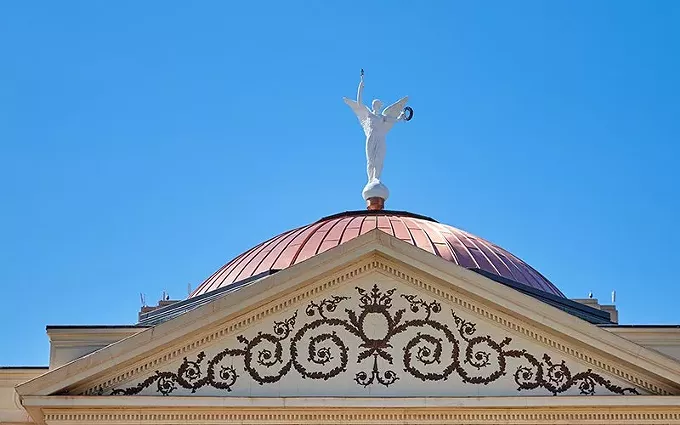
WASHINGTON – Arizona Sen. Kelly Townsend, R-Mesa, dropped her bid for Congress Friday, after failing to get a “promised” endorsement from former President Donald Trump – and days after criticizing another Trump-backed candidate on the Senate floor.
Townsend on Wednesday joined other senators who had voted overwhelmingly a day earlier to censure state Sen. Wendy Rogers, R-Flagstaff, for Rogers’ appearance at a white nationalist conference where she praised the organizer.
“It was a hard decision because I knew I was throwing away a pathway to Congress, but it’s not worth it enough to me to have to stay quiet in order to get that endorsement,” Townsend said Friday.
She acknowledged that by “speaking up, I’m speaking out against someone that the president had endorsed.” She said Trump’s people never turned her down, but would not confirm an endorsement, and acknowledged that speaking out likely cost her the endorsement in the newly drawn 6th Congressional District, which stretches south from Casa Grande to include much of the southeastern part of the state.
But others noted that Townsend would have faced a tough race for Congress, regardless, with a late start in a new district that she does not currently live in, elements that would have “handicapped” her campaign even with a Trump endorsement.
“When she entered that congressional race, she was already well behind the eight ball,” said Doug Cole, the chief operating officer of HighGround Public Affairs Consultants.
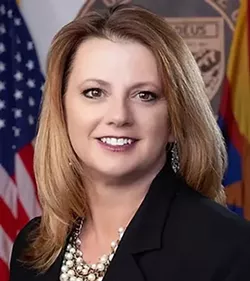
Townsend’s announcement comes just days after the Senate voted 24-3, with three senators not voting, to censure Rogers for “conduct unbecoming a senator” in her appearance at the America First Political Action Conference on Feb. 25.
At that conference, organized by white nationalists, Rogers praised those attending as “patriots.” She was also “encouraging violence against and punishment of American citizens and making threatening statements declaring, quote, political destruction, unquote, of those who disagree with her views,” said Sen. Rick Gray, R-Sun City, who proposed the censure resolution.
All 13 Democrats who were present and 11 of the 14 Republicans in the chamber voted for censure. A visibly shaken Rogers accused her colleagues of attacking her First Amendment rights, calling the censure resolution “nothing more than an attempt to limit my speech.”
“I do not apologize, I will not back down,” Rogers said Tuesday. “And I am sorely disappointed in the leadership of this body for colluding with the Democrats to attempt to destroy my reputation.”
Rogers did not respond to a request for comment Friday.
Townsend was among those not voting because she was not present Tuesday. But she took the floor Wednesday to say she would have voted yes, unless Rogers disavowed the “very ugly rhetoric” espoused by the conference organizer, including antisemitic remarks and comments about pedophilia.
“If the senator is willing to apologize for any misunderstanding and denounce this, my vote would have been red on the board in the name of free speech,” Townsend said. “If she is unable to do that, then I would want the record to show that had I voted, it would be green.”
In a prepared statement Friday, Townsend said she had been encouraged by “people close to President Trump” to enter the congressional race. When it became clear that she would not get the endorsement after her Wednesday floor speech, she said she decided to drop out for the good of the party.
Staying in the race, she said in her statement, “will serve only to split the conservative vote … and make it more difficult to elect an authentic America First candidate.”
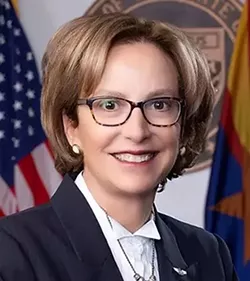
“I don’t want to be responsible for handing it to a moderate by splitting the vote without the Trump endorsement,” Townsend said in a phone interview Friday evening.
She said she has not made a decision about her political future, but analysts say one option would be for her to run for reelection, where she would face Rogers in a redrawn legislative district. In doing so, she would be taking on an extremely well-funded opponent in Rogers, who claims to have already raised more than $2.5 million.
“A key challenge for Townsend is the millions of dollars that Rogers has raised,” said Bill Scheel, a partner at the Arizona political consulting firm Javelina. “I think that is what Townsend would have to look at, is how she would compete.”
Experts said Rogers has already been able to use the censure vote to raise more money, but Scheel said the censure could still work in Townsend’s favor in a head-to-head matchup.
“I don’t think that a majority of Republicans, even in Arizona’s Legislative District 6, believe all of these crazy things that Wendy Rogers is saying,” Scheel said. “There are more mainstream Republicans who have come to support Townsend.”
Robert Robb, an editorial columnist for the Arizona Republic, agrees.
“If she were to run, I think she would have a chance to make the censure an issue in the primary,” Robb said. “She would be a formidable candidate.”
While she has not made any decisions, Townsend said Friday that she had received “overwhelming support” from voters for her Wednesday speech. Many of those she has spoken to have urged her to “run against her and deliver us from Wendy Rogers.”
“Right now I have to decide if I’m willing to work with people who are unwilling to do the right thing in the face of such hate,” Townsend said.
WASHINGTON — With just five days left before government funding expires, Democrats and Republicans are trying to reach agreement on $1.5 trillion in federal spending as well as billions more in assistance to Ukraine and COVID-19 relief.
U.S. Senate Majority Leader Chuck Schumer wrote Monday morning that Democrats made “a reasonable global offer to Republicans” and that he hoped both political parties would reach agreement before a stopgap government funding bill expires on Friday at midnight.
“We have been working on a bipartisan, bicameral basis through the weekend to finish work on an omnibus package that includes robust assistance to the people and government of Ukraine and additional funds to ensure our country is prepared if and when the next COVID variant strikes,” Schumer wrote.
The Biden administration last week requested Congress provide $10 billion in defense, economic and humanitarian aid to Ukraine amid the ongoing war there as well as $22.5 billion in coronavirus relief funding.
That threw a bit of wrench into ongoing negotiations to fund the government.
Democrats and Republicans have been working for months to hammer out a final agreement on the dozen annual government funding bills before a temporary spending measure expires on Friday.
Those talks were fragile enough without both parties trying to determine what is needed for the Ukrainian war effort as circumstances on the ground change by the hour.
The additional coronavirus relief funding also faces challenges.
Thirty-six Senate Republicans wrote a letter to President Joe Biden last week citing concerns about fraud and asking for “a full accounting” of how the U.S. government has spent the roughly $6 trillion on COVID-19 aid Congress has approved since March 2020.
The group specifically asked the White House to detail how much of the $350 billion in state and local aid Democrats provided in their $1.9 trillion COVID-19 package in March 2021 has been used for vaccines and testing.
According to the Committee for a Responsible Federal Budget’s tracker, about $244 billion of the $350 billion for state and local governments has been spent.
Local, state and tribal governments were able to use the funding for a variety of pandemic-related activities, including public health; premium pay for essential workers; to replace revenue lost due to the pandemic; and to invest in water, sewer, or broadband infrastructure.
The Senate GOP group didn’t rule out supporting billions more in coronavirus aid, but said “it must be an urgent priority that the trillions of taxpayer dollars already appropriated are being spent effectively.”
Speaker Nancy Pelosi wrote to her conference on Sunday to say that “Congress intends to enact this emergency funding this week.” She also said the House is working on separate legislation to address the ongoing Russian war in Ukraine.
The California Democrat said that bill would “further isolate Russia from the global economy” by banning imports of Russian oil and energy products, repealing normal trade relations with Russia, allowing the White House to increase tariffs on Russian imports and taking the first step to end Russian access to the World Trade Organization.
The White House, so far, has been reluctant to block imports of Russian oil over concerns it would increase gasoline prices even more than they’ve already gone up.
Pelosi wrote in her letter that “the United States need not choose between our democratic values and our economic interests.”
“The Administration and the Congress remain laser-focused on bringing down the higher energy costs for American families and our partners stemming from Putin’s invasion,” she continued.
The strong statements from Schumer and Pelosi followed a Zoom call that brought hundreds of U.S. lawmakers together with Ukrainian President Volodymyr Zelenskyy this weekend.
According to an individual on the call, Schumer told Zelenskyy that he, Senate Minority Leader Mitch McConnell and several other lawmakers were working in “a bipartisan fashion to get all the assistance the administration has requested for the Ukrainian people. Together we will get that assistance of over $10 billion in economic, humanitarian, and security assistance to the Ukrainian people quickly.”
Arizona Mirror is part of States Newsroom, a network of news bureaus supported by grants and a coalition of donors as a 501c(3) public charity. Arizona Mirror maintains editorial independence. Contact Editor Jim Small for questions: info@azmirror.com. Follow Arizona Mirror on Facebook and Twitter.
Reading first is easier than repealing later ... Daniel Patterson is back (in Nevada) ... And it's Election Day for some of you!

The Arizona Agenda is a Substack newsletter about Arizona government and politics run by Rachel Leingang and Hank Stephenson. You can find their archives and subscribe at arizonaagenda.com.
Arizona Republican lawmakers showed yesterday that they can move quickly to solve a problem if they really want to, while Democrats showed that they can adhere to the state Constitution if it’s politically beneficial to them. |
Yes, we’re talking about the precinct committeeman law debacle again.
The speed at which they moved to appease a few hundred political activists stands in stark contrast to the way they dealt with a real problem earlier this year, when schools were facing an effective cut of more than $1 billion and lawmakers waited until the 11th hour to act. If you’re also wondering what a PC is and why you should care, the shortest answer is they’re the lowest-ranking party officers, and they set the direction of their respective political parties. While the individual position holds little power, collectively, they help decide whether U.S. senators get censured or whether the party backs or opposes legislation at the Capitol.What's a PC?
— JoMo in the 480 (@JoMo480) March 7, 2022
After catching hell over the weekend from Republican PCs — many of whom chalked up a simple case of legislative incompetence to some far-fetched conspiracy — Republican lawmakers sprung into action to repeal the problematic provision of House Bill 2839 yesterday, with some pledging to grind the Legislature’s work to a halt until it’s fixed.
Monday, March 7, 2022
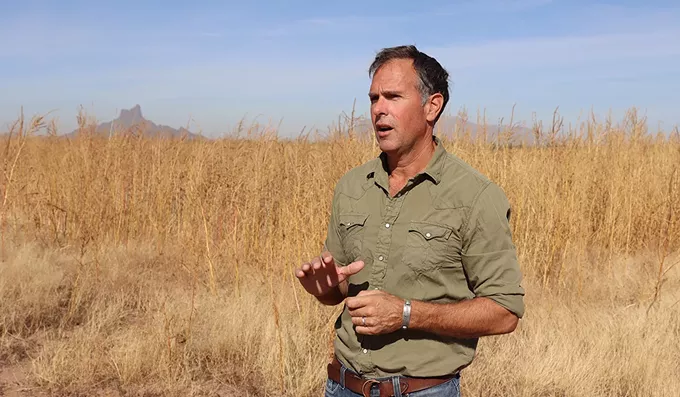
RED ROCK – All around Picacho Peak, the Sonoran Desert is brown and dry and rough. The soles of your feet could not tell the desert hardpan from an asphalt road.
About 2,500 feet above the ground, water vapor streaming northeast into Arizona from the Gulf of California condenses into larger and larger droplets until they’re too heavy to remain suspended. When thousands become one, that drop falls toward earth. For two to seven minutes, the drop freefalls, reaching speeds up to 20 mph before it strikes the surface.
The impact is quiet. But for the compacted soil, the rain does not provide necessary moisture, it tears the land apart. The crust on top of the soil keeps the water from penetrating. As the water seeks its level, it rips across the surface in muddy flash floods, further eroding topsoil.
On an 8-acre plot off South Aguirre Lane in unincorporated Red Rock, Ricardo Aguirre is using his family’s old ranch to prove there is a way to stop the flooding and erosion. He can’t make the rain fall, but his mission is to prepare the land to utilize the rain when it comes, “making sure every raindrop is effective the moment it falls on the ground,” said Aguirre, a drainage engineer.
“Which means get it in the ground and make sure that it doesn’t run laterally across.”
Aguirre directs land management and water security for the civil engineering firm WEST Consultants Inc., which specializes in water resource management and has offices in Arizona, California, Oregon, Washington and Texas. The land where his family once farmed cotton and ran cattle is where he now demonstrates methods to restore grasslands, improve soil health and ultimately reverse desertification.
Deserts cover more than 41% of Earth’s landmass, according to the United Nations. But because of human activity, deserts are growing by about 33,000 square miles – the size of Ireland – every year.
Deforestation, destructive agricultural practices and climate change have contributed to the degradation of topsoil and expanding deserts. Yet healthy topsoil is essential to growing food, and according to one U.N. study, if land degradation continues, topsoil could be gone within 60 years.
The symptom of desertification that Aguirre is addressing is excess flooding. He’s looking at alternative land management practices to return water cycles to nature’s designs.
Going against the grain
Aguirre spent more than a decade of his civil engineering career utilizing modern methods of stormwater management. His textbooks and his degree from University of Illinois taught him to manage water with a pipe, a channel and a hole in the ground. He described his career as “intrinsically connected to the land,” and that connection, along with his agrarian roots, led to much deliberation in the back of his mind. He felt a responsibility to leave the land he worked with better than he found it.
In August 2010, he became a father, and those deliberations moved to the front of his mind.
Aguirre imagined a conversation 15 years in the future in which his son asks whether he took advantage of being in a position to do something about the degrading environment.
“Looking at the designs that I had, that are now constructed, and the impact that they have on the environment,” Aguirre said, “I didn’t like the answers that I was giving … for that conversation with my son.”
Aguirre relegated his textbook knowledge and looked to a different teacher: Mother Nature. He studied how nature configured the water cycle, and how humans used to exist in and be part of the mineral cycles, eating and drinking off the land and returning the nutrients as wild animals do today, before the industrial revolution began in the 1700s.
“So through that discovery, I realized that we are going 180 degrees against the grain,” Aguirre said. “And the harder that we fight nature’s principles, the more degradation that we’re creating.”
In his research, Aguirre discovered holistic land management, which uses controlled grazing techniques to work cooperatively with ecosystem processes. It was pioneered by Allan Savory, founder of the Savory Institute, who grew up in South Africa loving the environment and despising livestock because he believed grazing damaged the land.
As a young biologist in Africa, he worked to set aside land to become national parks. In the 1950s, the protected land he studied in Zimbabwe continued to deteriorate, and he concluded there were too many elephants for the land to sustain. His superiors confirmed his research.
“Over the following years, we shot and killed 40,000 elephants to try to stop the damage,” Savory said in a 2013 TED Talk. “And it got worse, not better.”
He described it as “the saddest, and biggest blunder” of his life.
Savory was determined to find solutions. He traveled to the western U.S., where cattle had been removed from land to demonstrate how that would stop desertification. But he said he found the opposite.
Savory came to understand that the vegetation being lost in these expanding deserts was developed over thousands of years and adapted to large herds of grazing animals migrating across the landscape.
Aguirre is trying to address these same issues in the Southwest, explaining that land degradation has been caused by the lack of migratory animals brought on by urban expansion that reduces and limits animal populations.
When a fence goes up, said Grant Tims, Aguirre’s ranch manager, the land is left idle.
“So in arid climates, it’s the rest that is the problem,” Aguirre said, as Savory witnessed in Africa. “Where most people think it’s overgrazing.”
Aguirre relates “the health of the land to the health of the human body,” comparing land degradation to muscle atrophy in people: A sedentary lifestyle will cause the body to deteriorate.
“You’re not stressing the land with hoof action, you’re not stressing the land with animal impact,” he said. “That stress will actually cause a positive response.”
Aguirre reached out to the Savory Institute after the 2013 TED talk with a new concept of connecting civil engineering and holistic land management. In 2014, he went to Zimbabwe to see Savory’s work for himself.
Aguirre visited a small stream with big implications. The stream in recent decades had been ephemeral, meaning it only runs after rains, but villagers in the area had transformed the stream through holistic land management.
“For me, as a drainage engineer,” Aguirre said, “that just blew my mind that seven out of nine villagers that subscribed to this program were able to restore the watershed function to the degree that the streams were running again, on a perennial level, and reversed 40 years of an ephemeral stream.”
Shortly after, Aguirre became the director of his own Savory Hub in Arizona, which now is called the Drylands Alliance for Addressing Water Needs, where he teaches holistic land management practices. His goal is to transform his desertifying homeland, halfway between Phoenix and Tucson.
“That’s … my personal BHAG (big hairy audacious goal) as a drainage engineer is to get that level of watershed function back into the watersheds of Arizona and the Southwest and beyond,” he said.
Aguirre took the idea of using land management instead of concrete and steel to address water resources to WEST Consultants, which welcomed the idea.
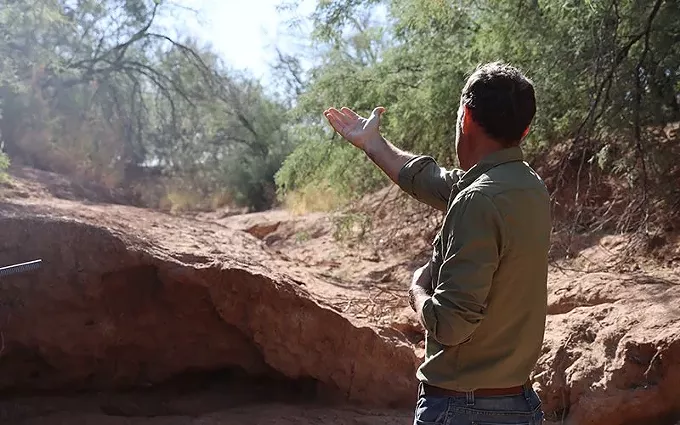
How a watershed works
A watershed is an area of land that “channels rainfall and snowmelt to creeks, rivers and lakes” according to the National Ocean Service.
“If you look at a leaf,” Aguirre said, “a leaf pattern shows that. Because that’s how nature has figured out how to get nutrients.” Or like the human body, he added, with a system of veins leading to the heart.
Ideally, most rain will seep into the soil, recharging the aquifers and moving through the soil toward a common body of water.
When raindrops fall onto land where watershed function is deteriorating because of desertification, it runs off.
“It begins to make one, two, three, four one-off tributary streams,” Aguirre said. Those ephemeral streams lead to extensive erosion, which destroys roads and bridges as well as topsoil.
“A functioning watershed should really only have one, maybe two tributaries,” he said.
The remedy, Aguirre believes, is to restore vegetation and root systems to the barren soil.
Erinanne Saffell, Arizona’s state climatologist, described the important role of plants in the hydrologic cycle.

“We want to have what’s called interception,” she said, “which is where the precipitation will hit trees, vegetation of some kind … that allows the water to infiltrate more readily and recharge our aquifers.”
Vegetation acts as “storage locations and transfer mechanisms of water,” Saffel said. “If (raindrops) come down and hit bare soil, that’s actually very disruptive to having water go into the ground and recharge our aquifers.”
Water security concerns continue to loom in Arizona, where heavy monsoon rains in 2021 did little to alleviate long-term drought conditions, according to the Arizona Department of Water Resources. Arizona is still experiencing severe drought or worse this year.
Aguirre is preparing the land on his demonstration site to better receive rain to revitalize the grasslands, which are now bare, but under the soil lie seeds hungry for water.
“What we can expect is that there is a seed bank, roughly about 2,000 seeds waiting to be germinated in every square yard,” Aguirre said. “It’s just a matter of assembling the right conditions for that germination.”

Soil intervention
Like a human body that has spent years resting, failing to get proper nutrition and not drinking enough water, the desert needs help, Aguirre said.
The health services Aguirre and Tims provide are moving sheep, goats and chickens across the demonstration site; their hooves break up the hard soil and their dung and urine fertilize it for weeks at a time.
To accelerate the regeneration process, Aguirre and Tims also use what they call biological soil amendments, made up of bacteria, fungi and other microbes. The increase in this carbon-based matter helps provide nutrients to plants and boost the soil’s ability to absorb and hold water.
When Aguirre returned to the property he grew up on in the summer of 2019, “we started with basically bare soil,” he said. Now, especially after heavy monsoon storms in 2021, there is growing evidence that the land is responding positively to the animals, in some places the evidence is as tall as him.
“The grasses where the animals have been have been beyond waist high, compared to where the animals have not been, are barely coming up to a person’s knees,” Aguirre said.
On a tour last fall of the site, Tims lifted a blue tarp off a compost pile used to brew the biological soil amendments. Unlike the surrounding landscape, the little world under the blue tarp is teeming with life that flies, jumps or scurries away as the tarp is removed.
Aguirre and Tims steep the compost like a tea bag, extracting the abundance of microbial life.
“We take that water and put it in a brewer, and that’s what we’re actually putting into the soil,” Tims said. Using a low impact plow with circular blades, the brew soaks into soil, priming the pump for seed germination.
The lungs of the land
Revitalizing grasslands in desertified regions does more than improve watershed function, it allows the soil to breathe in and trap carbon – making it a natural countermeasure to the rising carbon dioxide levels contributing to climate change, according to the U.S. Department of Agriculture.
Healthy vegetation sequesters carbon through photosynthesis, pumping it down through its roots and into the soil. The healthier the soil, the deeper the carbon may go.
Pawlock Dass, with the department of land, air and water resources at the University of California, Davis, co-authored a 2018 study that shows grasslands are an even more reliable carbon sink than trees, particularly because of the increasing threat of wildfire.
Dass said healthy forests store more carbon than grasslands, but there’s a catch in California, Arizona and other arid places.
“Forests store a large percentage of their carbon above ground, that is the bulk of the tree biomass, that is a trunk of a tree,” Dass said, and in a wildfire, all that carbon is released into the atmosphere.
Grasslands, however, store most of their carbon below ground as root biomass, he said, where it’s protected from fires and promotes healthy soil that allows grasslands to grow back.
Dass’ study looked specifically at companies investing in planting forests to offset carbon emissions.
“If that carbon gets emitted back into the atmosphere (in a fire), it doesn’t really make much sense,” Dass said. “All the investment is basically lost.”
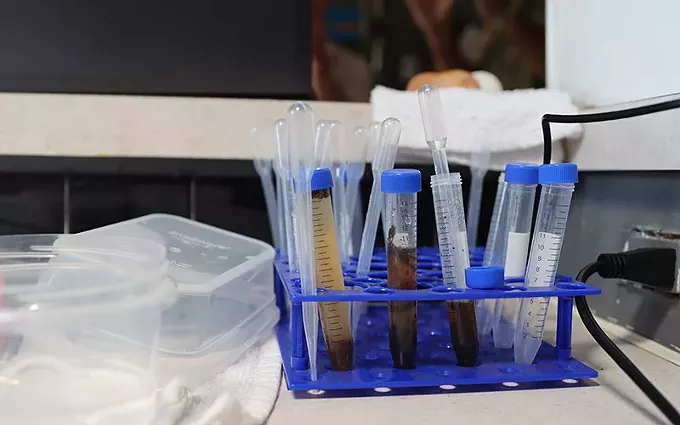
Restoring the cycle
When a raindrop strikes areas of revitalized grass off South Aguirre Lane, it doesn’t tear the land apart. It gets captured by the vegetation and transferred into the soil. The root systems and growing microbial populations absorb and hold the water – promoting more grass growth and more water capture. Eventually, it seeps down to recharge the aquifers.
“We can’t make it rain, but what we can do is we can make the rainfall more effective,” Aguirre said. “We’re offering land management as an alternative to engineering.”
The process starts in the lab, where Aguirre and Tims inspect the bacterial and fungal population of the compost through a microscope. The microbiology helps germinate the seeds in the soil, the grass then is grazed by chickens, sheep and cows that further break up the soil. More water is absorbed, which means more grass, more animals, more life.
The objective is to counteract desertification and its symptoms.
“All of (the problems) come back to this,” Tims said. “Compaction and biology.”
It turns deserted land into a valuable, fertile asset. It restores watershed function, helping with water security concerns, according to Aguirre and Tims.
Don Steuter, with the Sierra Club’s Grand Canyon Chapter, which has been critical of Allan Savory’s cattle grazing claims in the past, expressed cautious optimism about Aguirre’s undertaking.
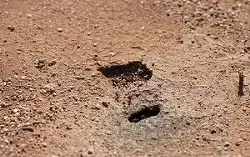
“We’re always interested in projects like this,” Steuter said, although he believes the success of cattle-grazed land is more likely to be a site-specific fix rather than a universal one.
“We’d be tickled to death if cattle could make the land better,” Steuter said. “It would solve a lot of our problems, but we don’t think it’s very likely.”
Still, Steuter said, he’s intrigued with Aguirre’s mission to heal watershed function and is looking forward to seeing the results.
Aguirre and WEST consultants are working on land restoration projects in Cochise County and are seeking state and federal contracts as well.
Aguirre said he’s the only civil engineer he knows of who’s bridging holistic land management with his profession. He hopes not for long.
“The overarching objective that I believe my calling is, is to reinvent my profession of civil engineering,” Aguirre said.
In three years, when his son turns 15, Aguirre can realize that imaginary conversation. If his son asks him if he used his position to improve the degrading environment, Aguirre no longer has to give the answer he never wanted to:
“I didn’t do anything about it.”
Gov. Doug Ducey’s claim that facilities in some Arizona counties are charging victims to process their rape kits is disputed by almost every county, and those advancing the claim refuse to reveal where it’s happening.
On Jan. 11, Ducey announced that some Arizona jurisdictions were charging victims $800 in processing fees in violation of the federal Violence Against Women Act, which guarantees that rape kits are free of cost for sexual assault victims.
Arizona law directs counties in which the assaults occur to cover the costs. The Arizona Mirror contacted all 15 county attorney’s offices in the state, and of the 14 that responded, all said they’d never heard of rape victims being charged fees in their counties. The county attorney for Apache County could not be reached after several requests for comment.
Brian McIntyre, the county attorney for Cochise County, said there was one incident 10 years ago — before he was in office — when a woman was billed for her rape kit at a local hospital emergency room. The matter was resolved by county officials after she notified them that her bill had been sent to collections.
“To my knowledge, that hasn’t happened since,” he said..
Mohave County Attorney Matt Smith said he once heard a rumor that hospitals were using collection agencies to go after victims for forensic exam fees. But in the past 10-15 years, that hasn’t been something he’s been aware of happening in Mohave.
Ducey’s claim appears to have originated with a September 2021 letter sent to the governor’s office from the Comission to Prevent Violence Against Women, which helps develop public policy. The $800 estimate was not included in the letter and interviews with the letter’s authors to find out which jurisdictions the governor was referring to were inconclusive.
After the governor made the allegation in his State of the State address, the Arizona Mirror contacted all 29 facilities in the state that provide forensic exams to rape victims. The 17 that responded to inquiries denied charging victims any fees.




